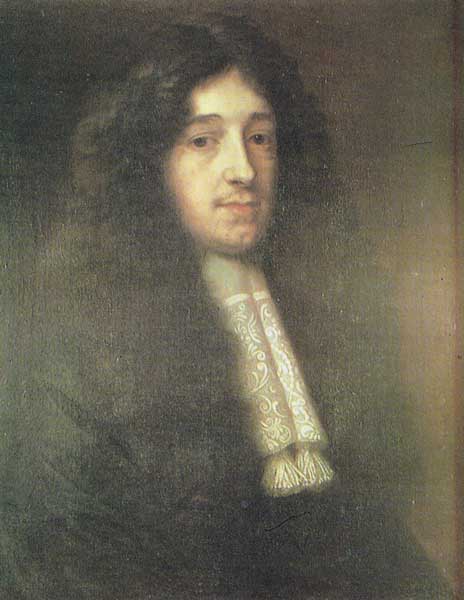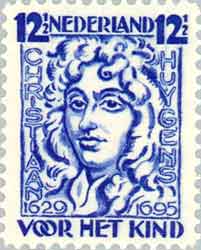- MacTutor: Christiaan Huygens
- Treatise on Light translated into English by Silvanus P. Thompson, Project Gutenberg etext.
- Huygens Clocks exhibition from the Science Museum, London
- Huygens-Fokker Foundation on Huygens' 31-to-the-octave musical scale and how it has been used
- How to pronounce "Huygens" (includes sound file of pronunciations by Dutch people)
- ^ NASA page: The Story of Saturn/The moons "On March 24, 1655, ... The next day, Christiaan Huygens ... discovered its largest moon, Titan." States the date of discovery. verified 22:00, 29 Mar 2005 (UTC)
.
Christiaan Huygens

Christiaan Huygens
Christiaan Huygens (April 14, 1629–July 8, 1695), was a Dutch mathematician and physicist; born in The Hague as the son of Constantijn Huygens. He studied law at the University of Leiden and the College of Orange in Breda before turning to science. It is a good thing he did, as historians commonly associate Huygens with the scientific revolution.
Christiaan generally receives minor credit for his role in the development of modern calculus. He also achieved note for his arguments that light consisted of waves; see: wave-particle duality. In 1655, he discovered Saturn's moon Titan. He also examined Saturn's planetary rings, and in 1656 he discovered that those rings consisted of rocks. In the same year he observed the Orion Nebula. Using his modern telescope he succeeded in subdividing the nebula into different stars. (The brighter interior of the Orion Nebula bears the name of the Huygens Region in his honour.) He also discovered several interstellar nebulae and some double stars.

Christiaan Huygens, Physicist / Astronomers Stamps
After Blaise Pascal encouraged him to do so, Huygens wrote the first book on probability theory, which he had published in 1657.
He also worked on the construction of accurate clocks, suitable for naval navigation. In 1658 he published a book on this topic called Horologium. In fact his invention, the pendulum clock (patented 1656), was a breakthrough in timekeeping.
The Royal Society elected Huygens a member in 1663. In the year 1666 Huygens moved to Paris where he held a chair at the French Royal Society. Using the Paris Observatory (completed in 1672) he made further astronomical observations.
Huygens early speculated in detail about life on other planets (although we do not know to what extent ancient writers exercised such speculation, since most of their work has not survived). In his book Cosmotheoros, further entitled The celestial worlds discover'd: or, conjectures concerning the inhabitants, plants and productions of the worlds in the planets (see online edition) he imagined a universe brimming with life, much of it very similar to life on 17th century Earth. The liberal climate in the Netherlands of that time not only allowed but encouraged such speculation. In sharp contrast, the Italian authorities had burned philosopher Giordano Bruno, who also believed in many inhabited worlds, at the stake for his beliefs in 1600.
In 1675, Christian Huygens patented a pocket watch.
Huygens moved back to The Hague in 1681 after suffering serious illness and died there 14 years later on July 8, 1695.
Named after Huygens
- The Huygens probe: The lander for the Saturnian moon Titan, part of the Cassini-Huygens Mission to Saturn
- Asteroid 2801 Huygens
- A crater on Mars
- A mountain on the Moon
- Huygens Software, a microscope image processing package.
- Achromatic eyepiece design named about him
Links
Retrieved from "http://en.wikipedia.org/"
All text is available under the terms of the GNU Free Documentation License

